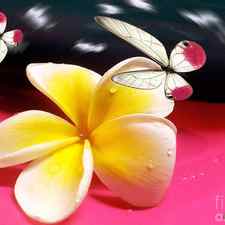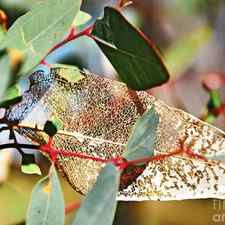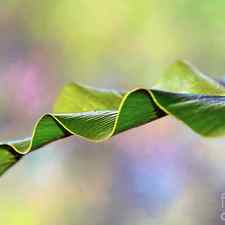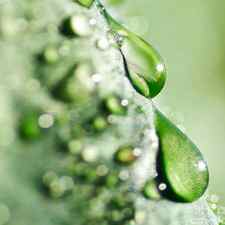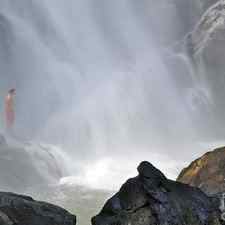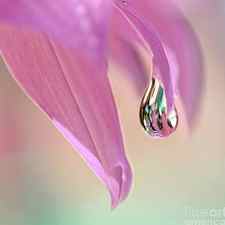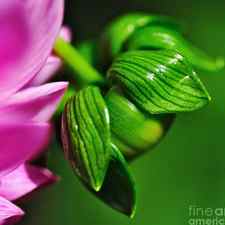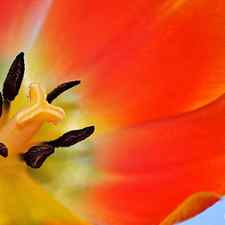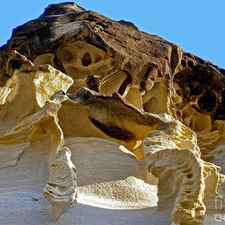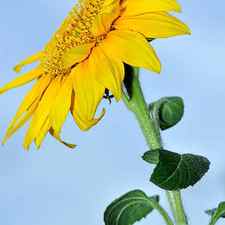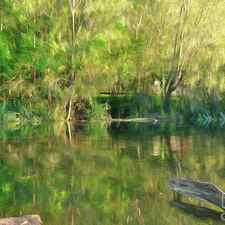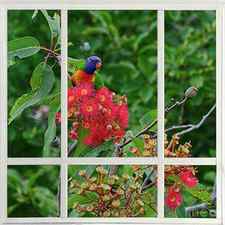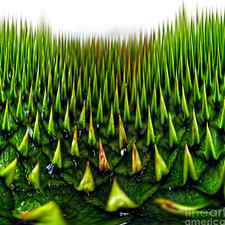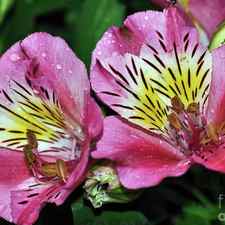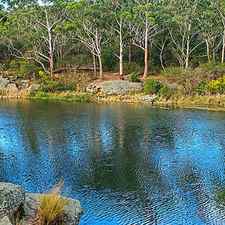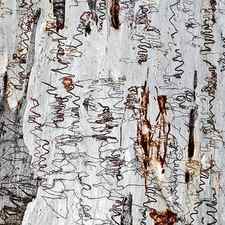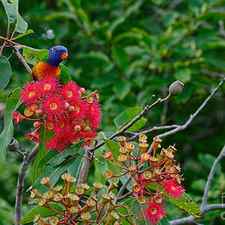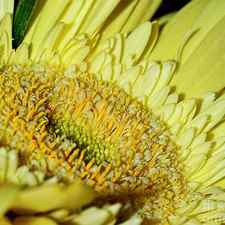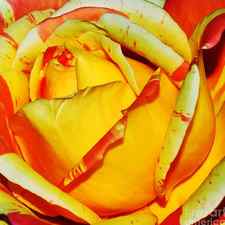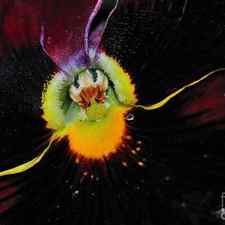Thank you Chris for the comment and f/v.
Georgia O’Keeffe’s Missing Hawaiian Painting “Hibiscus” Resurfaces at Auction, Selling for $4.8 Million
Georgia O’Keeffe, Hibiscus, 1939. Courtesy of Christie’s.
Yousuf Karsh
Georgia O’Keeffe, 1956
Huxley-Parlour
When the New York Botanical Garden (NYBG) opened its “Georgia O’Keeffe: Visions of Hawai’i” exhibition on May 19th, one important painting was missing: Hibiscus (1939). Featuring yellow and pink hibiscus flowers seen up close against a blue sky, it’s quintessential O’Keeffe. Having the painting—one of 20 that O’Keeffe painted during her time in Hawaii—on view would have offered a more complete story of the artist’s production during her time there in 1939. But in all of curator Theresa Papanikolas’s searching, she could never locate it.
It took Christie’s far less detective work to find it: One of the auction house’s clients simply offered it up. Instead of appearing alongside its Hawaiian peers at the NYBG, Hibiscus was the lead work at the Christie’s American art sale this morning, selling for a $4 million bid, or $4.8 million with fees, just at its low estimate of $4 million.
Before the sale, auctioneer John Hays announced that the painting may yet rejoin the group: The NYBG and the Brooks Museum in Memphis, Tennessee—the next destination for the show—have both requested it. The buyers, who Christie’s would not identify, have an opportunity to lend it out—and immediately enhance its provenance.
According to Paige Kestenman, an American art specialist at the auction house, the Christie’s team reached out to Papanikolas while researching Hibiscus’s exhibition history. Kestenman says that Papanikolas told Christie’s: “This is one of the paintings we were looking for. We were able to locate 19 of the 20 paintings.…This was the one we could not.’”
Georgia O’Keeffe
Jimson Weed/White Flower No. 1, 1932
“Georgia O’Keeffe” at Tate Modern, London
Georgia O’Keeffe, Waterfall No. 1, ‘Īao Valley, Maui, 1939. © 2018 Georgia O’Keeffe Museum / Artists Rights Society (ARS), New York. Courtesy of the New York Botanical Garden.
Advertisement
In fact, Christie’s was only able to identify two galleries in which Hibiscus had been publicly exhibited: An American Place (a gallery run by O’Keeffe’s husband, Alfred Stieglitz) in 1940, and a Memphis gallery in 1998. Otherwise, Hibiscus has mostly remained in private hands.
The Christie’s pricetag squares with O’Keeffe’s impressive track record at auction. In 2014, her Jimson Weed/White Flower No. 1 (1932) sold to the Crystal Bridges Museum of American Art for $44.4 million at Sotheby’s, becoming the world’s most expensive painting by a woman artist (the previous record holder was Joan Mitchell’s Untitled from 1960, which sold for $11.9 million earlier that year at Christie’s).
Kestenman says that a few recent prices helped the auction house determine the estimate for Hibiscus. Its sale of David and Peggy Rockefeller’s estate earlier this month saw another O’Keeffe work, a Southwestern landscape entitled Near Abiquiu, New Mexico (1931), sell for $8.4 million. Other flower paintings have sold in the single-digit millions. Last year, a flower done in pastel, Yellow Sweet Peas (1925), sold for $4.4 million last year at Sotheby’s.
Just how high can O’Keeffe’s market go? “Because a lot of her very major works are in institutional collections, I think it will depend on if there are major examples that become available on the market,” says Kestenman. “There’s a consistent, strong demand for her paintings.”
Harold Stein, Georgia O’Keeffe on Leho‘ula Beach, near ‘Aleamai, Hāna, Maui, 1939. Courtesy of the New York Botanical Garden.
Georgia O’Keeffe, Black Lava Bridge, Hāna Coast, No. 1, 1939. Courtesy of the Honolulu Museum of Art and the New York Botanical Garden.
Kestenman calls Hibiscus “important,” if not major. The painting is, though, of historical note. O’Keeffe’s larger series of Hawaiian flora and fauna has received particular attention over the past few years. In 2011, Koa Books published Georgia O’Keeffe’s Hawai’i, and the Honolulu Museum of Art presented “Georgia O’Keeffe and Ansel Adams: The Hawai’i Pictures” in 2014.
The artist initially traveled to the islands in 1939 to work on a commission for the Hawaiian Pineapple Company (which later became Dole). While the company hired her to render images for its advertising campaign, O’Keeffe instead roamed around O’ahu, Maui, Kaua’i, and Hawai’i, painting whatever she wanted. Verdant green valleys, spiky bright-red heliconia, and craggy black rocks all captured her attention.
In a catalogue essay for the NYBG show, Papanikolas writes that O’Keeffe created four compositions of hibiscus—“close studies of a single species that are both consistent with her serial modernism and suggestive of her personal transformation from tourist to ensconced visiting artist.”
According to Cody Hartley, senior director of collections and interpretation at Santa Fe’s Georgia O’Keeffe Museum, O’Keeffe’s Hawaii period is a great touchpoint in her career. The artist, who had been living in New York for years, began visiting New Mexico in 1929. She was so enamored with the landscape that she started spending months there at a time, relocating permanently in 1949. Inspired by her new surroundings, O’Keeffe painted bones, skulls, and other imagery associated with the desert.
Georgia O’Keeffe, Heliconia, Crab’s Claw Ginger, 1939. © 2018 Georgia O’Keeffe Museum / Artists Rights Society (ARS), New York. Courtesy of the New York Botanical Garden.
Georgia O’Keeffe, Pineapple Bud, 1939. © 2018 Georgia O’Keeffe Museum / Artists Rights Society (ARS), New York. Courtesy of the New York Botanical Garden.
“Hawaii is this interesting interlude between the decade when she discovers New Mexico and when she starts to really make plans to spend the rest of her life here,” says Hartley. In Hawaii, O’Keeffe employed what he calls “a drawing practice where she used her sketches to understand and discover new places.” Her focus turned from the dry and desolate New Mexico to lush, vegetal Hawaii.
“Globally, Georgia O’Keeffe is most known for her flower paintings,” Kestenman points out, placing Hibiscus (and many of the Hawaii works) within a broader section of the artist’s body of work. “They were the paintings that first made her a real sensation.” O’Keeffe employed the subject from the 1920s through the 1950s. These pictures became immediately popular, especially as viewers interpreted the flowers’ indentations and folds as symbols of female genitalia. (Stieglitz, O’Keeffe’s husband, started the rumor.) O’Keeffe rejected the associations, which oversimplified her work.
Indeed, Hartley acknowledges both the broad appeal of the artist’s oeuvre and its subtler, more skillful elements. “Her work reproduces very cleanly in print,” he says. “I think that’s one of the reasons she’s so accessible.” Yet only in person can the viewer assess the artist’s light, skillful touch. O’Keeffe often employed a “wet into dry” technique, allowing full sections of paint to dry before beginning on the next.
According to Hartley, O’Keeffe saw her subjects as simple excuses to put oil paint on canvas in intriguing new ways. “Creating those subtle folding areas of color, those subtle gradations—that’s where she’s trying to engage you as a viewer,” he says. “It’s really about what she’s doing with paint more than anything that has to do with the flowers themselves.”
Hibiscus Pop Art Paintings

Limited time offer
BUNDLE: get 4 pictures (4K quality) about ”Hibiscus’ (Pop Art)
- ✓ 4000px | 300dpi resolution (4K high quality)
- ✓ Bundle: 4 pictures included (No watermark)
- ✓ Commercial use: royalty free (no attribution)
- ✓ Print on demand: canvas, t-shirts, mugs etc.
- ✓ Instant digital download (PNG/JPG)
P.S. Special offer: Get all my 6900+ images for $297 $67 only!
« Your purchase helps me to pursue my passion. So, from the bottom of my heart, thank you for your support and belief in me and in my art. »
Category: Hibiscus Tag: Pop Art
- Description
- Special discount (1)
A painting of hibiscus flower on a blue background – Pop Art
A painting of a hibiscus flower on a blue background is a beautiful and meaningful work of art. The hibiscus flower is a symbol of beauty and grace, and the blue background can represent a variety of things, such as tranquility, peace, and serenity. The combination of the two elements creates a peaceful and calming atmosphere. The painting can be interpreted as a reminder to take a moment to appreciate the beauty and grace of life. It can also be seen as a reminder to take a moment to appreciate the beauty of nature and the world around us. The painting can also be seen as a reminder to take a moment to appreciate the beauty of the people in our lives. The painting is a reminder to take a moment to appreciate the beauty of life and the beauty of the world around us.
A colorful hibiscus flower with splatters can be a beautiful and meaningful piece of art. The bright colors of the flower can symbolize joy and optimism, while the splatters can represent the chaos and unpredictability of life. The combination of these two elements can be a reminder to appreciate the beauty of life, even in the midst of its messiness. As a painting expert, I would suggest that the artist use a variety of colors to bring out the vibrancy of the flower, and to create a sense of movement with the splatters. This would make the painting more dynamic and visually appealing.
A blue sky above a giant red hibiscus – Pop Art
The painting of a blue sky above a giant red hibiscus is a beautiful and meaningful scene. The blue sky symbolizes freedom, openness, and optimism, while the red hibiscus is a symbol of beauty, strength, and passion. Together, these two elements create a powerful image that speaks to the beauty and potential of life. The combination of the two colors also creates a sense of balance and harmony, which can be a reminder of the importance of finding balance in our lives.
A large bright hibiscus flower illustration with rays is a beautiful and meaningful scene. The hibiscus flower is known for its beauty and grace, and the bright colors of the flower combined with the rays of light give the painting an uplifting and positive feeling. The rays of light represent hope and optimism, and the flower itself symbolizes joy and happiness. The painting is a reminder that even in difficult times, there is always something to be thankful for and to look forward to. It is a reminder to stay positive and to keep striving for the best in life.
Discover my captivating world as Marco Lovato, a passionate digital painter from Italy. I am thrilled to extend a special offer exclusively to you. Use the following coupon code to save 15% and embrace the opportunity to own a treasure trove of artistic excellence.
Do you want more?
Immerse yourself in the breathtaking realm of my artistry. With a collection of 9300+ captivating pictures, each created with passion and a unique artistic vision, prepare to be mesmerized.
Unlock the opportunity to own this extraordinary collection for an unbeatable price. For a limited time, you can acquire all 9300 pictures for $297 $67, a remarkable discount.
Support my passion and seize this incredible offer today.
Remember, this offer won’t last forever. Take action now and embrace the beauty that awaits within my 9300 picture collection.
More from Kaye Menner
